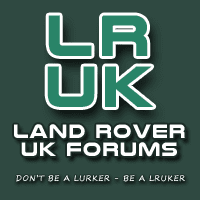I would be very tempted to just clear coat it.
You'll note I haven't said yay or nay, end of day it's your choice!
You'll note I haven't said yay or nay, end of day it's your choice!
Photos of the result, Khriss?I roller painted mine after bare metal strip, one coat sand etch primer and roller coated green, looked ok
The blast is really light, your right it could be a mistake, but I see it no more inappropriate than a 2 pack acrylic or any modern paint, the colour is the original code for Deep bronze greenJust paint it if you want it to look nicer. I can see no obvious advantage in powder coating, and certainly risking deformation of the panels by soft media blasting first. Why go this route? It's an inappropriate finish for a Series 1 IMO.
Goes on really thin, they also do motorcycle mud guards etc, hoping it'll reduce / stop any further galvanic corrosion that's eaten some decent holes in itI'm not a fan of powder coat, its often too thick and too brittle and once water gets under it you get terrible corrosion. Its also very hard to touch up. I much prefer synthetic enamel. But I see the people you are planning to use do helicopters so I'm thinking they must be able to put it on thin and flexible. I still don't like it but I reckon you've got the best chance of success.
Did this About ten years ago....give it another ten years and I will do it againPhotos of the result, Khriss?
The magic ingredient is dichloromethane.go to spray shop an get their aircraft quality stuff
We used to restore and respray aircraft. Have never powder coated one. Either 2 pack or base & clear. It's all in the prep. Need to get rid of the Ali corrosion - especially seams and around rivets where you often find spider web type corrosion radiating out from the rivet (once did an aircraft with 33,000 rivets we individually cleaned). If not it will come right back eventually. Vehicles are much simpler, but on Land Rovers you've got steel to contend with - so rust and galvanic corrosion.interestingly the guys I'm using also powder coat alloy helicopter panels
True. The paint stripper you use can make a huge difference. Some are highly corrosive and bad for health. Also if you don't get it all out of the seams (can be very difficult on aircraft) it can react with new paint. We used an eco stripper - just spray or brush it on and leave overnight. Add more as required to keep it moist and the reaction going. Don't do it in the cold - warm the atmosphere and metal before applying and keep warm throughout the process - far better results and won't use as much stripper - expensive stuff. We used Socomore Socostrip which is specifically for aluminium. Here is one fuselage part way through.go to spray shop an get their aircraft quality stuff - rips paint off !

Yep - it's fun working upside down on a cold concrete floor with crap falling in your hair, nose, mouth & ears, etc. Our aircraft were a lot smaller than your B707. Bottom of fuselage just out of reach - couldn't stand up or lie down completely - whole job done in stress positions (a bit like working on a LandyHitchhiker42, those 33,000 rivets reminded me of one of the worst jobs I ever had to do. A B707 with a lot of stone chips under the fuselage. These were near the end of of their service life and had huge number of hours, they were getting one last overhaul then when the next was due they were flown to the US for scrapping. The bottom of a B707 is only about 4ft off the ground and the job was to wrap both hands in Scotchbright and clean the corrosion off the whole underside. There was no comfortable position so its 5 mins on 5 mins off for 2 days. I have a vague recollection is was "RF". Commercial work is all about keeping the aircraft in the air. The rear floor was corroded under the toilets (as usual) and the proper repair was to cut out the ally angle and riven in new sections. An old had showed my how to do it on these end life planes - he ground the screws to a point, put 2 pack mastic down and nailed the floor panels down.
OK, sounds... OK.Zinc based undercoat, every part will be blasted with a very fine media (not even as harsh as soda) to key the undercoat, they do large alloy panels for helicopters, so this gives me some confidence, all hinges etc removed.....
Actually, inhaling dichloromethane fumes can cause your blood vessels to constrict and induce a heart attack, so respirator is an essential. Having said that, I spent weeks stripping paint from the oak panelling in a 17th Century historic building (Victorian vandalism!) and did so inhaling a lot of the stuff and often without gloves. Rubber gloves are required but idiot in charge kept supplying me with nitrile gloves, which melt!The magic ingredient is dichloromethane.
Only available 'to professionals' these days. Whatever that means.
I get mine from auto paint places and yes, it will rip paint off...and the linings of your lungs so wear a respirator
Aye - burns like anything. Fumes bad for you too. The stuff we used just left a white mark on the skin which went off after a while - worked just as well. You don't strip above sensitive equipment without masking it up first - looking after people is optionalThis stuff was like a strong(!) version of the old Nitromors and was taking the 2 pack epoxy straight off.
Rubber gloves are required but idiot in charge kept supplying me with nitrile gloves, which melt!
